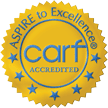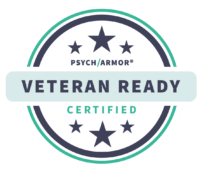The Vagus Nerve: Your Key to Better Calm and Control
The human body has numerous processes that are generally automatic. While we’re not exactly on auto-pilot, we rarely have to think about these functions. One primary star in this lineup is the vagus nerve: not only does it operate fairly well on its own, but you can also improve its impact by learning to stimulate it for better health.
Understanding the Vagus Nerve
The autonomic nervous system has two divisions. You’ve probably heard of “flight or fight”—the sympathetic nervous system (SNS). There’s also “rest and digest”—the parasympathetic nervous system (PNS):
- The SNS responds when you’re in danger, physically active, or stressed. It increases heart rate and respiration and sharpens sight. It diverts energy in this way by reducing other processes, such as digestion.
- The PNS automatically controls involuntary body functions such as movement, your immune system, heart rate, respiration, and digestion. You’re not able to consciously control these automatic functions.
The vagus nerve, also known as cranial nerve X, is one of 12 cranial nerves and the primary command center for the PNS. Although often referred to as a singular nerve, there are actually two vagus nerves—one on either side of your neck–and both are responsible for how involuntary body functions perform. “Vagus” is Latin for “wandering,” and it’s the longest nerve in the body, originating in the brain stem, passing through the neck, and winding through the chest, heart, lungs, abdomen, and digestive tract.
So the vagus nerve is the automatic connection between your brain and body you rarely have to think about, as it’s working behind the scenes all the time. However, you can learn vagus nerve stimulation techniques to minimize the heightened response of the SNS and prompt a stronger reaction from the PNS. This practice may be helpful to manage addiction triggers, control stress more effectively, and improve overall well-being.
Why Stimulate the Vagus Nerve?
Mayo Clinic indicates that “when the vagus nerve is stimulated, electrical impulses travel to areas of the brain. This alters brain activity to treat certain conditions.” Although it might not be something you’ve heard of before, vagus nerve stimulation (VNS) is a procedure used in both conventional and functional medicine. For example, Mayo also reports that the U.S. Food and Drug Administration approved VNS for various purposes, including:
- As a treatment to reduce episodes of focal epilepsy, as well as a possible alternative for people who don’t respond well to anti-seizure medication.
- For adults with treatment-resistant depression who are non-responsive to medications, electroconvulsive therapy, or counseling.
- To help individuals to recover arm and hand function after an ischemic stroke.
- As a potential remedy to reduce the intensity of cluster headaches and migraines.
Some of these conditions may use non-invasive techniques and devices, while others require surgical implantation of a specific stimulation device.
The National Library of Medicine reports that researchers have also found a link between low vagal tone and stress in both adolescents and adults. Vagal tone is a measurable factor that indicates how well the vagus nerve performs.
- From one study: “Vagal tone is a measure of cardiovascular function that facilitates adaptive responses to environmental challenges. Low vagal tone is associated with poor emotional and attentional regulation and has been conceptualized as a marker of sensitivity to stress.
- And another: “A review of research indicates that baseline levels of cardiac vagal tone and vagal tone reactivity abilities are associated with behavioral measures of reactivity, the expression of emotion, and self-regulation skills.”
Preliminary research also indicates that improving vagal tone leads to better cardiovascular function and gastrointestinal health, helps people manage symptoms of mental health disorders, and reduces symptoms of autoimmune conditions.
Easy, Non-Invasive Ways to Stimulate Your Vagus Nerve
Curious about how it might work? You can start practicing right now with the following free techniques:
- Deep belly breathing. Okay, yes, we said that respiration is an automatic function, but you can learn to control your breath to lessen your stress response and reduce pain. Breathe deeply through your nose, letting your ribcage expand. Count to four. Then, lengthen your exhale for a count of eight, and release through your mouth—this prompts the relaxation response. Try for at least five or more full breath cycles.
- Loud gargling. The vagus nerve pair, located in the neck, respond to the muscular movement as you gurgle water deep in your throat.
- Singing. Belting out your favorite tune creates vibrations that stimulate the nerve. Chanting and humming work well, too.
- Laughing. Same thing! Plus laughter is a natural mood booster, and triggers abdominal support of the nerve.
- Cold water immersion. Whether you put your face into a basin of cold water or switch the shower from hot to cold for a few seconds at the end, research shows it increases PNS, especially after exercise.
Some experts also recommend improving vagal tone through a whole-foods diet—especially the recommended 25–30 grams of fiber daily—and regular exercise.
Seabrook’s Holistic Approach to Overall Wellness
Taking better care of yourself starts with having access to various holistic techniques. Holistic therapies such as acupuncture, focused breathwork, EMDR, brainspotting, and music therapies are just a few offerings at Seabrook’s four New Jersey locations that help all our clients successfully manage their health and recovery. If you or a loved one believes in this type of progressive treatment, talk with our admissions staff to learn more.




